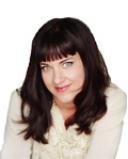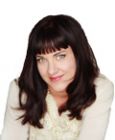Health
The Difference Between Healing and Curing
Healing and curing are inherently different.
Posted October 11, 2011 Reviewed by Jessica Schrader
Welcome back to The Pink Medicine series, wherein I share with you my vision for a new type of health care model, a model I call "Pink Medicine." In my last post, The Difference Between Sick, Well, & Whole, I talked about my father's death and said that I learned that there is a critical difference between healing and curing. Today I want to expound a bit on that difference.
Key to my Pink Medicine model is the notion that you can heal yourself from illness, trauma, loss—whatever is holding you back from skyrocketing to the stratosphere in all aspects of your life.
But this notion is contingent upon one key bit of semantics.
While I also believe you can cure yourself, one gigantic lesson I learned in the past few years is that healing is not the same as curing. You can cure without healing, and you can heal without curing. In medical school and residency, most of our training focused on curing. Very little attention was focused on healing. You might heal a fracture or heal a gaping surgical wound. But healing a person? Nah. Woo woo, hocus pocus horsesh*t.
But healing and curing are inherently different. Curing means "eliminating all evidence of disease," while healing means "becoming whole."
In 16 years of being a doctor, I've learned this key distinction and it has revolutionized the way I practice medicine. A few health conditions are easily cured. A single bladder infection can be treated with an antibiotic, and three days later, it's cured (though you may now have a raging yeast infection). A leg fracture may be cast, and two months later, the problem is cured. A basal cell carcinoma (skin cancer) can be lopped off, never to return again.
But most health conditions are not so easily cured—things like migraine headaches, cancer, high blood pressure, diabetes, fibromyalgia, chronic pelvic pain, arthritis, and emphysema. Most health outcomes are much more successfully treated if they are healed from the core.
For example, you can give someone with high blood pressure three pills that barely control their hypertension, but until they learn to manage the high stress of their job in healthy ways (or quit their job), you're unlikely to "cure" their high blood pressure. The pills are merely a Band-aid.
If someone has ovarian cancer, you can cut out the cancer and treat any remaining cells with chemotherapy. But you can only "cure" cancer if the underlying physical/ emotional/ nutritional/ life imbalances are healed. Otherwise, the cancer just comes back.
In the case of chronic illness or emotional disease, "cure" is only lasting when healing happens on a deeper level.
Once I knew in my heart that there is a difference between healing and curing, I had this "a-ha!" moment that led me to realize that everything I had been taught in medical school was suspect and needed to be reevaluated. I spent 12 years of medical education learning how to cure people, but no one once spoke to me about healing. The past five years have been about that process for me, and I will share part of what I have concluded with you in this blog post series.
What if those of us in need of healing—and those of us committed to helping others overcome illness, trauma, or loss—aim to mix healing and curing? Whoa, Nelly! Now we're talking, baby. When you marry healing and curing, you pave the way for magic to happen.
What Does It Mean to Heal?
Before we move any further forward, let me comment on what I think it means to heal and how I'll talk about those who help facilitate the process. First, a note about the word "healer." Please, don't back away just because I'm using this word. I know it's a loaded word, conjuring images of Baptist preachers laying on hands and bellowing, "You are healed, brother!" (No offense to Baptist preachers, of course.) Or perhaps you think of the ancient medicine woman gathering herbs to pound into a potion.
But hear me out. My intention is to expand the definition of what it means to be a healer, such that the term includes, not just the man who practices the wisdom of native medicine or the "woo woo" practices of a New Age woman in a muumuu, but also the Western medical doctor, the nurse, the Chinese medicine doctor, the or tech, the yoga teacher, and you!
We healers are numerous. And we come with varied backgrounds, different belief systems, and unique tools in our healing toolbox, and yet, we are all still healers. But you are the most potent healer of all.
It's Easy to Get Overwhelmed
The scope of what's broken in our health care system may seem daunting—and it is. But my goal with The Pink Medicine blog post series is to help us work from the inside out. The U.S. government is spinning their wheels, trying to work on changing the external aspects of what is broken in our health care industry. But that will only take us so far. We must reclaim the heart of healing, and it has to start with you. Changing the skeleton of our system, without focusing on the heart, defeats the whole purpose. When something lacks heart, the whole thing keels over and dies, which is what's at risk of happening to our current system.
So instead of tackling the big behemoth of our entire health care industry, I'll focus in this series on expanding what it means to be healthy and whole. I'll remind you that you know your body way better than anyone and that the power you have to heal yourself will blow you away.
I'm not suggesting that you won't still seek out the guidance of other healers. When you need an antibiotic for that strep throat, by all means, go to your doctor if that's where your healing inner wisdom leads you! When you throw out your back, call your chiropractor if that's who you believe can help! When your husband cheats on you, get thee to a therapist, if therapy resonates with your spirit. Go ahead and seek cure.
And don't forget about preventative health. Get your Pap smear, mammogram, and colonoscopy. Get your blood pressure, cholesterol, and glucose levels checked.
But unless you do the deeper work, these things are only Band-Aids. Healing goes to the heart and changes everything, if you approach it the right way.
My vision of Pink Medicine is to create a huge healing roundtable at which you, as the patient, sit alongside those of us whose healing services you seek out. You are a vital, valued member of that healing roundtable and, in my opinion, your voice matters most. You get the seat of honor. The rest of us all have tools in our toolboxes, for sure. And when we gather our tools together from different disciplines in a loving, collaborate, integrative way, with you at the center of our efforts, magic can happen.
But only if you are an active participant.
My goal in visioning Pink Medicine is to create a heart-centered healing movement that shifts the tectonic plates of how we receive and deliver healing services. This model might make some people uncomfortable. After all, we're used to passively showing up at the doctor's office, handing over our power and our intuition, and blindly doing as we're told by the people in the white coats.
But it's time to deal with the discomfort and make the change—now.
Are you on board? If so, make sure you've signed up to be a Pink Medicine Revolutionary so I can keep you in the loop as my ideas about all this develop. And stay tuned for my next post in the series wherein I offer a Global Apology on Behalf of Physicians Everywhere.
Committed to helping you heal.
Learn more about Lissa Rankin here.




